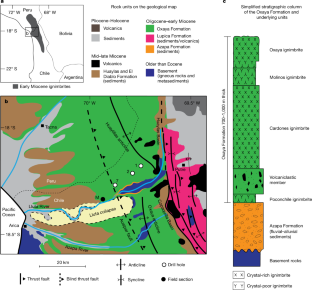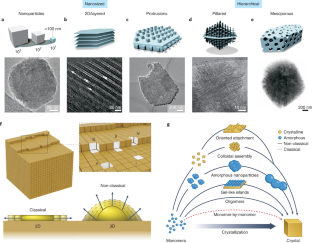2022-08-11 パデュー大学
研究チームは、中央アンデスにある古代の超噴火の堆積物から採取した結晶内部のアルゴンガスを注意深く測定し、超噴火が起こる直前に何が起こるかについての新しい情報を提供しました。この新しいデータとモデルを使って、大規模な火山の地下の配管システムが、超巨大噴火につながるような変化を、どのくらいの速さで、どのような方法で起こすのかを説明することができたのです。 この発見により、将来の超巨大噴火をより正確に予測できるようになるかもしれません。
<関連情報>
- https://www.purdue.edu/newsroom/releases/2022/Q3/scientists-are-closing-in-on-the-cause-of-volcanic-super-eruptions.html
- https://www.nature.com/articles/s41586-022-04921-9
プルトンの成長、マグマチャンバーの形成、超噴火のタイムスケール Timescales for pluton growth, magma-chamber formation and super-eruptions
M. E. van Zalinge,D. F. Mark,R. S. J. Sparks,M. M. Tremblay,C. B. Keller,F. J. Cooper & A. Rust
Nature Published:03 August 2022
DOI:https://doi.org/10.1038/s41586-022-04921-9

Abstract
Generation of silicic magmas leads to emplacement of granite plutons, huge explosive volcanic eruptions and physical and chemical zoning of continental and arc crust1,2,3,4,5,6,7. Whereas timescales for silicic magma generation in the deep and middle crust are prolonged8, magma transfer into the upper crust followed by eruption is episodic and can be rapid9,10,11,12. Ages of inherited zircons and sanidines from four Miocene ignimbrites in the Central Andes indicate a gap of 4.6 Myr between initiation of pluton emplacement and onset of super-eruptions, with a 1-Myr cyclicity. We show that inherited zircons and sanidine crystals were stored at temperatures <470 °C in these plutons before incorporation in ignimbrite magmas. Our observations can be explained by silicic melt segregation in a middle-crustal hot zone with episodic melt ascent from an unstable layer at the top of the zone with a timescale governed by the rheology of the upper crust. After thermal incubation of growing plutons, large upper-crustal magma chambers can form in a few thousand years or less by dike transport from the hot-zone melt layer. Instability and disruption of earlier plutonic rock occurred in a few decades or less just before or during super-eruptions.



